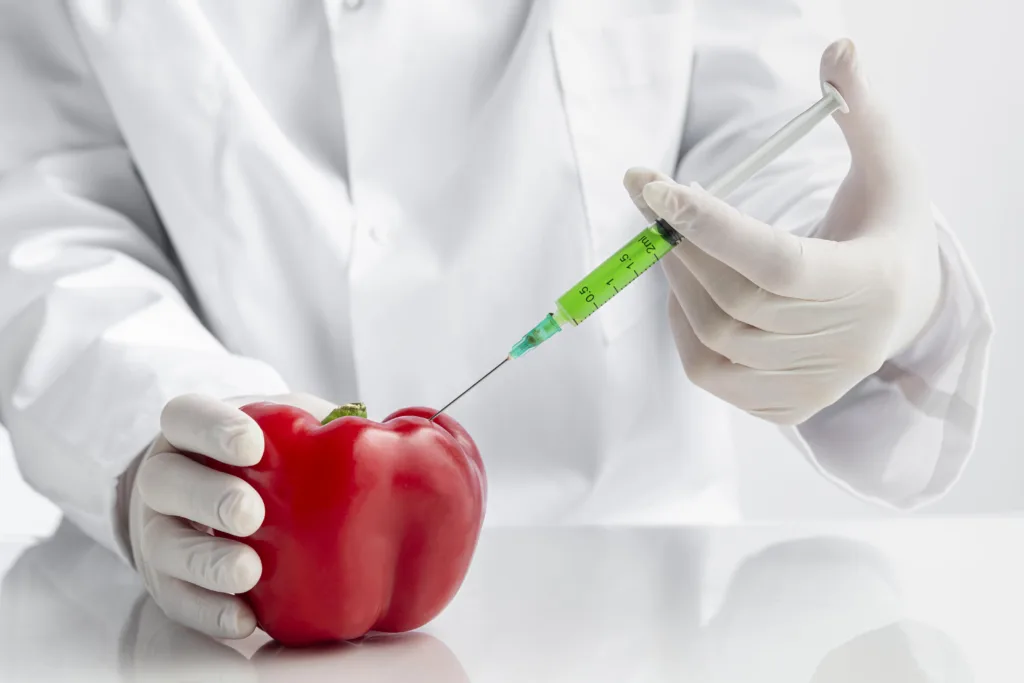In recent years, due to the advent of genetically modified organisms (GMOs) and the development of super crops, the field of agriculture has undergone a remarkable change. These advances are revolutionizing the way we grow and produce food, addressing challenges posed by climate change, population growth and resource limitations. In this article, we’ll take an in-depth look at the science behind super-crops and explore how Genetically Modified Organism strains are playing a key role in reshaping modern agriculture.
Table of Contents
Understanding Super Crops and GMOs

Super crops, also known as genetically modified crops, are plants that have been genetically altered to have specific desirable properties. These traits may include increased resistance to pests, diseases, and harsh environmental conditions, as well as improved nutritional content. GMOs are created through precise scientific techniques that involve transferring genes from one organism to another, often from unrelated species, to confer these beneficial properties.
Increasing crop resilience
One of the major advantages of Genetically Modified Organism strains is their ability to increase crop resilience in the face of various challenges. Conventional crops are vulnerable to pests and diseases, which can result in significant yield losses. However, GMOs can be engineered to express proteins that deter pests or even boost natural defences within the plant. As a result, farming becomes less harmful to the environment and requires fewer toxic pesticides.
Reducing environmental stress

Climate change has introduced a new set of challenges to agriculture, including unpredictable weather patterns and extreme conditions. Super crops are designed to thrive in these changing environments. Through genetic modification, crops can be made more tolerant of drought, heat, and other forms of environmental stress. This not only ensures a more reliable food supply but also reduces pressure on water resources and helps prevent soil erosion.
Improving nutritional value
Another interesting aspect of Genetically Modified Organism strains is their ability to increase the nutritional value of crops. Scientists can modify plants to produce higher levels of essential nutrients such as vitamins and minerals. It holds significant promise for addressing malnutrition and improving public health, especially in areas with limited access to diverse and nutritious foods is limited.
Addressing Global Food Security

As the population continues to grow, it has become increasingly difficult to ensure that there is enough food for everyone on the planet. Super crops have the potential to play an important role in meeting this demand. By increasing crop yields and reducing losses caused by pests and environmental factors, GMO strains contribute to a more stable and abundant food supply.
Ethical and environmental considerations
While the science behind GMOs and super crops is impressive, it is essential to address the ethical and environmental concerns associated with their use. Critics argue that genetically modified organisms may have unintended consequences, such as harming non-target organisms or causing a loss of genetic diversity. Rigorous testing and regulatory measures are necessary to ensure that GMOs are safe for consumption and do not harm ecosystems.
Pros and Cons of GMO food production

Genetically modified organisms (GMOs) have revolutionized food production and agriculture, providing various benefits and raising concerns. Here is a description of the advantages and disadvantages associated with Genetically Modified Organism Food production:
Pros:
1. Increase in crop yields: GMOs have the potential to generate higher crop yields, address the challenges of food scarcity, and contribute to global food security.
2. Enhanced nutritional content: Genetic modification can be used to enhance the nutritional value of crops, such as enriching them with essential vitamins and minerals.
3. Pest and disease resistance: GMO crops can be engineered to resist pests and diseases, reducing the need for chemical pesticides and minimizing environmental damage.
4. Environmental stability: Some GMO varieties are designed to thrive in challenging environmental conditions such as drought or poor soil quality, reducing pressure on land and water resources.
5. Reduction in spoilage: Genetic modification can increase the shelf life of some crops, reduce food waste and improve overall food distribution.
6. Tailored Traits: Specific traits can be introduced into crops, making them more adaptable to different growing conditions and consumer preferences.
7. Pharmaceutical production: GMOs can be used to produce pharmaceutical compounds, potentially leading to more efficient drug production.
Cons:
1. Unknown health effects: Concerns exist about the long-term health effects of consuming GMO foods, as some modifications may cause allergic reactions or other unforeseen risks.
2. Loss of biodiversity: GMO crops could potentially outcompete native species, leading to loss of biodiversity and negative effects on ecosystems.
3. Cross-Contamination: GMO crops can cross-breed with non-GMO crops, leading to the unintentional spread of modified genes and potentially affecting traditional agricultural practices.
4. Unintended Consequences: Changing the genetic makeup of organisms can have unintended ecological or agricultural consequences that are difficult to predict.
5. Corporate control: Patenting of GMO seeds by biotech companies can limit farmers’ choices, increase dependence on specific suppliers, and increase costs.
6. Ethical concerns: Gene manipulation raises ethical questions about messing with nature, tampering with the natural order and interfering with traditional agricultural practices.
7. Labeling and Transparency: The lack of mandatory GMO labelling can hinder consumer choice and transparency in the food market.
Balancing the advantages and disadvantages of GMO food production requires careful consideration of scientific, environmental, ethical and regulatory factors. As technology continues to develop, ongoing research and responsible decision-making are critical to harnessing the benefits of GMOs while minimizing potential risks.
Last word
In conclusion, the science behind super crops and GMO strains is reshaping our approach to agriculture and food production. These innovative technologies hold the promise of increased crop resilience, improved nutritional content and enhanced food security. However, we must approach the complexities of GMOs responsibly, taking into account both their potential benefits and their potential risks. As we continue to advance our understanding of genetic modification, we can create more sustainable and resilient food systems for future generations.

